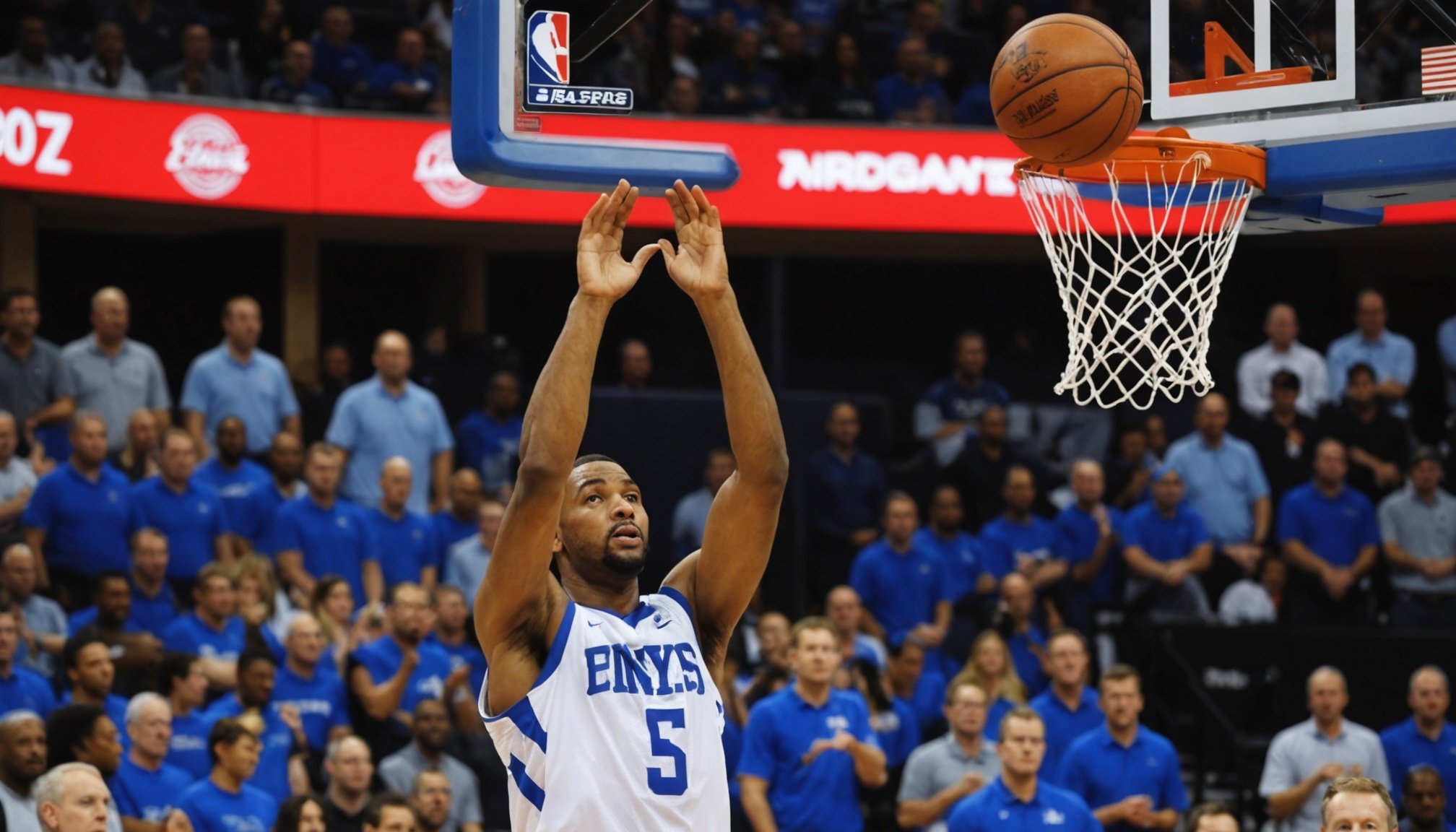Importance of Free-Throw Accuracy in Basketball
In basketball, free-throw importance cannot be overstated. A player’s ability to effectively execute free-throws often influences the game outcomes, making them a critical component of basketball performance. Statistics reveal that UK players who excel in free-throw shooting contribute positively to their team’s success. Teams with higher free-throw percentages generally fare better in tight matches, where every point counts.
For UK players, maintaining high free-throw accuracy is paramount, as it directly impacts both individual and team performance. Players often face situations where their free-throw percentage might be the difference between victory and defeat. Coaches emphasise the necessity of honing this skill through regular practice and focused effort.
Also to read : Boost Your Basketball Skills: Top Plyometric Workouts for Explosive Guard Performance in the UK
Beyond game mechanics, free-throw accuracy significantly affects a player’s confidence. Confidence in executing these shots under pressure reflects in their overall gameplay, enhancing their contributions to the team. For players, consistently practising free-throws can bolster self-assurance on the court, allowing them to perform at their best during crucial moments.
By understanding and prioritising free-throw accuracy, UK players can elevate their game and play a pivotal role in their team’s success. This dedication to precision impacts not only their stats but also the dynamics and morale of their team.
In the same genre : Conquering Pre-Game Anxiety: Key Strategies for UK Basketball Players to Excel
Understanding Visualization Techniques
Visualization Techniques hold a significant place in enhancing sports performance, especially in the realm of basketball. Essentially, these techniques involve the use of mental imagery, which requires athletes to engage their mind in simulating the performance of tasks or actions outside of physical practice. This mental rehearsal is pivotal in not just reinforcing skills but also preparing mentally for competitive scenarios.
In sports psychology, visualization is touted for its numerous benefits. For athletes, mental imagery can bolster confidence, reduce anxiety, and sharpen focus. By mentally experiencing the exact shot or play, they prime their bodies to replicate these actions during actual gameplay. The principle is straightforward: if an athlete can mentally see a successful outcome, it becomes more achievable in reality.
The psychological principles underpinning these techniques suggest that by repeatedly visualizing specific actions, athletes can create stronger neural pathways related to those tasks. This not only aids in skill development but also in executing those skills under pressure. When an athlete has visualized a successful free-throw multiple times, they are more likely to perform it precisely when the moment arises. Such techniques embed a sense of familiarity and mastery, even in unfamiliar scenarios.
Overcoming Psychological Barriers in Free-Throw Shooting
In basketball, addressing psychological barriers is crucial for improving free-throw performance. Players often encounter challenges such as performance anxiety, which can significantly affect their shooting accuracy. Understanding sports psychology enables players to build resilience against such mental blocks.
Performance anxiety manifests as nervousness or fear during crucial moments, impacting a player’s ability to focus. To combat this, athletes can use techniques like controlled breathing and focusing on the present moment to maintain composure during high-pressure situations. Controlled breathing helps regulate physiological responses, allowing players to centre their attention on the task at hand.
Building mental resilience involves developing a strong mindset that can withstand the pressures of competition. Players can practise mental rehearsal, visualising each successful shot to create a positive mental association with free-throws. This method fosters familiarity and reduces the fear of failure when performing under pressure.
Additionally, employing positive affirmations can enhance self-belief, countering self-doubt that may arise mid-game. Consistent practice of these strategies strengthens one’s mental fortitude, equipping players to overcome psychological barriers and improve their free-throw shooting. By focusing on these aspects, players can transform potential impediments into opportunities for growth and improved game performance.
Effective Visualization Strategies for Free-Throw Shooting
Visualisation can significantly enhance free-throw skills through targeted mental rehearsal. These strategies contribute to skill development, fostering both precision and confidence.
Pre-Shooting Routine
Establishing a consistent pre-shooting routine sets a reliable foundation for successful attempts. Begin with a series of rhythmic breathing exercises to calm the mind. Follow with a visualisation of the entire shooting process, from receiving the ball to observing it swish through the net. Regular pre-shot rituals mentally and physically prepare players, cultivating a cycle of confidence and focus.
Creating a Mental Image
An impactful step is crafting a vivid mental image of executing perfect free-throws. Imagine the feel of the ball, the arc of the shot, and the satisfying sound of the swish. Repeatedly envisioning these factors helps develop neural pathways that embed these actions into muscle memory. The clearer and more detailed the imagery, the better the brain primed for real-world execution.
Incorporating Positive Affirmations
Incorporating positive affirmations empowers players, boosting their self-belief. Phrases like “I am a confident shooter” or “I make every shot I take” can be recited. These affirmations counter negative thoughts, infusing each attempt with positivity and resilience. This strategy solidifies mental strength, encouraging peak performance.
Drills to Enhance Free-Throw Accuracy Using Visualization
Implementing structured free-throw drills that integrate visualization techniques can significantly bolster a player’s shooting precision and confidence. These drills are designed to mimic game scenarios and are essential for players seeking comprehensive skill enhancement.
Solo Visualization Drills
Incorporate mental imagery into solo practice sessions. Stand at the free-throw line and mentally rehearse the perfect shot—feel the ball, visualize the arc, and hear the net swish. Execute the shot, focusing on replicating your mental image. This practice strengthens neural pathways and embeds success patterns in muscle memory.
Partner Visualization Workouts
Engage in partner visualization workouts to heighten focus and accountability. Partners can alternate roles, with one acting as a coach offering feedback on form and execution based on visualized strategies. This interaction not only aids in correcting technical errors but also enhances mental clarity and practice effectiveness.
Game Simulation Practices
To simulate high-pressure environments, integrate game simulation practices where players perform free-throws under controlled, match-like conditions. This includes timed scenarios and crowd noise to mimic real-game stressors, sharpening mental resilience. Consistent exposure through these methods cultivates adaptability and breeds confidence, ensuring free-throw consistency under actual game pressure.
Insights from Professional Players and Coaches
Discovering insights from professional players and coaches reveals valuable strategies that enhance free-throw accuracy. This section synthesises pro tips, coaching advice, and the application of these insights in real-world scenarios.
Acclaimed UK players often highlight that consistency in free-throw performance does not arise solely from physical prowess but stems significantly from mental preparation. They frequently employ visualization techniques to mentally simulate every aspect of their routine. This method primes their minds to perform successfully during high-pressure moments.
Coaches offer a plethora of advice emphasizing the psychological dynamics of shooting accuracy. They encourage the use of mental imagery, as it is pivotal in developing a sustained focus and confidence. Integrating positive affirmations within practice routines helps players maintain a positive mindset, counteracting the effects of performance anxiety and mental blocks.
Real-world applications of these insights demonstrate their efficacy. For instance, professional players like Ray Allen are known for their meticulous pre-shot rituals, which underscore the benefits of blending routine with mental strategies. These methods contribute to a player’s resilience, allowing them to consistently excel in free-throw scenarios despite varying degrees of pressure.






